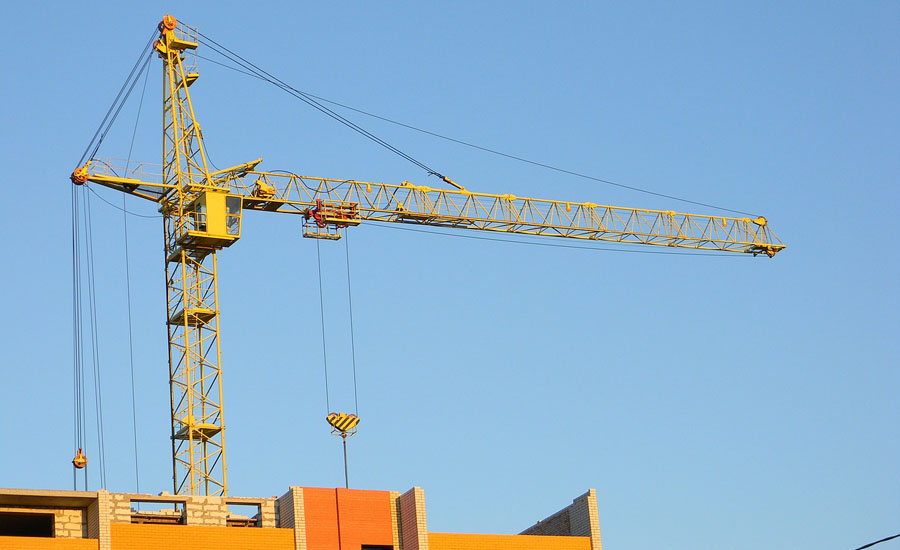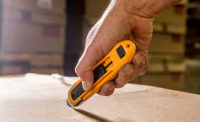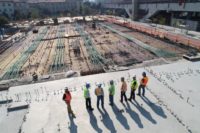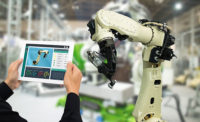Construction involves many hazardous operations. Crane lifts are particularly concerning, as they present risks from heavy machinery, heights and heavy loads all at once. New 3D lift planning technology can minimize these dangers.
What is 3D lift planning?
Lift planning in and of itself is far from new. While construction firms typically don’t create a dedicated plan for every crane operation, these strategies are standard for loads above a certain weight or height. 3D lift planning serves the same role but relies on digital 3D modeling software instead of paper blueprints and manual calculations.
This approach is similar to building information modeling (BIM), which North American contractors already use in 73% of their projects on average. As BIM uses virtual models to replace conventional, 2D blueprints, 3D lift plans provide digital alternatives to crane operation strategies. A software solution simulates the worksite, crane and load ahead of time to reveal crucial safety information.
This software can model how varying factors like crane configurations, load weights, heights, ground levels and more impact the safety of the lift. Consequently, construction teams can get a reliable picture of how a lift will go before attempting it in the real world.
Benefits of 3D lift planning
Like BIM, 3D lift planning software has significant economic and efficiency benefits. More importantly for safety managers, it also improves crane operation safety on several fronts.
Improved risk detection
The most obvious advantage of 3D lift planners is they offer more comprehensive risk analyses. Conventional, manual planning strategies can accurately calculate weight and height constraints under normal conditions. However, real-world environments involve more complex considerations that are difficult to account for without 3D modeling software.
This software can calculate ground pressures, centers of gravity, load geometries and more. They can consider complex influencing factors like the placement of rigging points, movement constraints and potential interference from other equipment or infrastructure.
Such a wealth of information makes it easier to spot potential hazards and plan accordingly to prevent or mitigate them. When teams can identify more risks, they can ensure safer workplaces, even in a site as complex and hazard-prone as construction zones.
Fewer errors
Similarly, 3D planning software often includes automated features. These may be as simple as adjusting calculations as users change certain parameters or as complex as simulating stress under varying weather conditions. In either case, automation improves safety by minimizing chances for human error.
Human error is one of the main causes of construction accidents. Data-centric, repetitive tasks like lift planning are more mistake-prone than others, as they’re unengaging and involve many small but important factors that are easy to get wrong. By contrast, computers excel at this work, so automating these calculations produces more reliable results.
Automating safety identification and tolerance calculations ensures the planned approach is the safest option. While errors are still possible, they’re far less likely. Using these software-derived calculations as minimum baselines instead of exact figures will yield even higher reliability.
Streamlined safety planning
It’s also worth noting that digital alternatives to crane operation planning are faster. 3D planning software can calculate necessary figures and identify risks almost instantly. That speed gives safety teams more time to double-check the results or address other worksite hazards.
Large projects overrun their schedules by 30% to 45% on average. Increasing pressures to reduce those delays may make teams more likely to rush through the planning phase to finish earlier. Because 3D lift planning provides both accuracy and speed, it removes the need to choose between finishing on time and ensuring project safety.
With more time, some teams may choose to run multiple simulations to account for varying conditions. Others may focus on hazard management in other parts of the project. Whatever the specifics, spending less time on crane planning without sacrificing accuracy ensures better overall site safety.
Better communication
A less obvious safety benefit of 3D lift modeling is improving communication. Safety managers can share digital crane plans through email or even text. Cloud-based software lets authorized users access this information from anywhere at any time. This accessibility has crucial safety implications.
Digital plans lead to faster problem resolution because they’re easier to access. They also prevent miscommunication that may stem from lost or damaged paper documents. Consequently, it’s easier to ensure everyone is on the same page before starting the project.
Crane operations require close coordination between multiple professionals, so thorough communication is essential to prevent collisions and other risks. The increased shareability and understandability of digital models serve that need far better than paper alternatives.
Best practices for effective 3D lift planning
Construction crews hoping to use 3D lift planning to its full potential should keep a few best practices in mind. Most notably, this software requires relevant, accurate data to provide reliable results. Even perfect calculations are only trustworthy if the inputs reflect reality.
To account for this data issue, construction firms must use as much project-specific data as possible. Some information may be unavailable until the day of lifting — estimates should err on the side of caution in those cases. Where possible, though, users should use specific measurements for aspects like the crane’s weight rating, load weight, building height and any environmental hazards.
Similarly, safety managers should use 3D lift plans as a baseline measurement, not an absolute truth. OSHA requires crews to balance loads before lifting them more than a few inches. That language indicates cranes should hoist loads off the ground slightly so teams can rebalance or secure them as necessary based on their real-world measurements and performance.
Always take 3D plans as a minimum acceptable measurement. Plan to balance and secure cranes for loads beyond what the software recommends to allow wiggle room for unforeseen conditions. Teams should also remember that a detailed plan is a complement to safe on-the-job practices, not a replacement.
New technology will usher in a new era of safety
Construction will always involve some amount of risk. However, new technologies like 3D lift planning software make those hazards more manageable. While they may not eliminate dangers from the job site, they mitigate their impact.
Gaining familiarity with these innovations today prepares construction firms for a safer, more tech-centric future. Proper implementation and training are still necessary, but taking advantage of available tools makes construction safety a more attainable goal.




